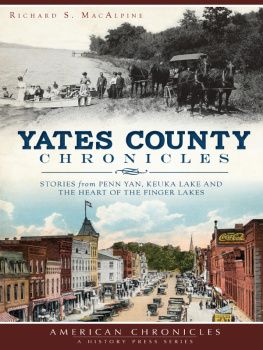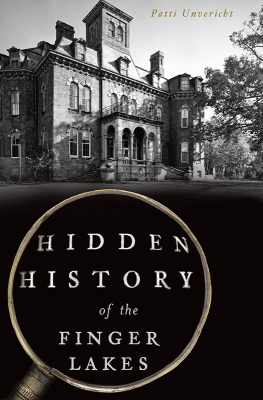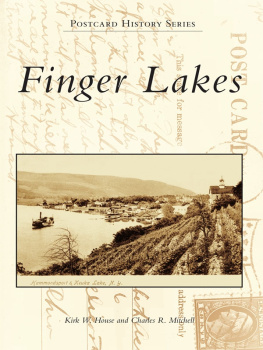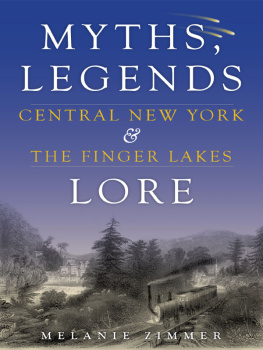
Published by Haunted America
A Division of The History Press
Charleston, SC 29403
www.historypress.net
Copyright 2012 by Patti Unvericht
All rights reserved
Cover image courtesy of Alan S. Bowser.
All images are from the authors collection unless otherwise noted.
First published 2012
e-book edition 2012
ISBN 978.1.61423.550.7
print ISBN 978.1.60949.603.6
Library of Congress CIP data applied for.
Notice: The information in this book is true and complete to the best of our knowledge. It is offered without guarantee on the part of the author or The History Press. The author and The History Press disclaim all liability in connection with the use of this book.
All rights reserved. No part of this book may be reproduced or transmitted in any form whatsoever without prior written permission from the publisher except in the case of brief quotations embodied in critical articles and reviews.
I dedicate this book to my team, Chasing Shadows Paranormal, and my best friend, Shawn. Our passion and love for the paranormal drives us to travel down this path of darkness. There is no one I would rather take the journey with.
To all the paranormal teams out thereyour dedication to this field does not go unnoticed. Keep up the awesome work that you do.
CONTENTS
ACKNOWLEDGEMENTS
I would like to thank my family, especially Mark, Liesl and Karl, for putting up with the long hours that went into writing this book. Your support helped push me to finish it. I love you all.
CAYUGA COUNTY
AURORA INN AND WELLS COLLEGE
AURORA
On the eastern shore of Cayuga Lake is the sleepy village of Aurora. In 1795, the post office was established, and the original name of the community was Scipio. It was officially named Aurora in 1810 when the federal government allowed the name of the post office to change. After Aurora became organized, the Morgan family was a huge influence. They were business owners and investors in important historic local and state ventures. They were also members of secret societies like the Masons.
Edwin Barber Morgan, one of Auroras most influential citizens, moved to Aurora from New York City when he was a baby. In 1833, Edwin built the Aurora House. It was used as a meeting place for village officials, and they often referred to it as Morgans Brick Tavern. The tavern had become a major stagecoach stop for weary, dusty travelers. The Aurora House soon became a famous establishment along the well-worn route.
Ownership of the Aurora House changed hands in the 1840s, when William D. Eagles bought it. William and his family never lived at the Aurora House; rather, his uncle, John Eagles, managed the property. John was quite an interesting character. He ran what would be called a traveling circus, complete with seventy horses and two elephants.

This is what the Aurora Inn looked like in 1848 when it was owned by William D. Eagles. Courtesy of Wells College.
Sometime in the mid-1800s, Edwins brother Henry Morgan (not of rum fame) acquired the inn. He owned it until he died on May 11, 1887. After his death, his family no longer wanted the property and sold it to Coral Smith.
A year later, in 1888, excitement hit the small village when the main building at Wells College was destroyed by fire. It displaced most of the students at the all-womens school, and the Aurora House was contracted to be used as a student dormitory until the new one was finished in 1890. During their stay at the inn, the girls from Wells nicknamed it the Wayside Inn, and the name stuck for years.
Twenty-nine years later, the college would return the favor. In February 1919, a major fire broke out in Auroras tiny business district. As the flames got closer to the Aurora House, the colleges president, K.D. Macmillan, came to the rescue. When the cornice of the brick building caught fire, Macmillan lay on the roof and extinguished the flames.
The inn changed hands several more times, and in the early 1940s, R.L. Zabriskie took possession of it. On March 30, 1943, he gave the Aurora House to Wells College. The Aurora House/Wayside Inn officially became the Aurora Inn in 1948. The inn fell on hard times in the 1970s. Not being able to make ends meet, it closed its doors. It wasnt reopened until 2003, after it underwent a major restoration, becoming the luxurious inn it is today.
Colonel Edwin Barber Morgan, original investor of the New York Times, U.S. House representative and builder of the Aurora House, was best friends with Henry Wells. In 1850, Henry came to Aurora from New York City, like Edwin had, with his family. He married twice and built his home twice. His first home burned down in 1851. He immediately began planning and building his new home, Glen Park. Perhaps Wellss biggest claim to fame was the merging of his company American Express with Merchant Union Express Company in Aurora, forming the Wells, Fargo & Co. in 1868.
In that same year, Henry opened the Wells Seminary, an all-womens college. Its name changed three times before it started classes, first as the Glen Park Institute, second as the Glen Park Seminary and third as it opened its doors as the Wells Seminary. In 1870, the name changed a final time, forever being called the Wells College.
The main building of the college was built in 1868. It was used for everything from administrative offices to classrooms and an infirmary. The fire that destroyed it in 1888 was not the last fire to plague the college. Morgan Hall, named after Edwin, was built in 1879 and would later be leveled by fire in 1925 and rebuilt.
In 1869, the college bought the Pettibone House. The home was originally built in 1857 by George Pettibone. According to some historical records, he was a gambler, a major player in the New York City financial scene and had a very rocky marriage. The Pettibone House was first used as a home for the college president and then as student housing. In the 1920s and 1930s, it was used as the infirmary on campus.
Henry Wells and his wife, Mary, were involved in every facet of the college. On Friday nights, students often had dinner with them at their home. While traveling abroad in Scotland, Henry died in Glasgow two days before his seventy-third birthday in 1878. His body was brought back to Aurora and laid to rest in Oak Glen Cemetery. His death left behind some financial problems for his wife and family. Glen Park went into foreclosure, and Mary was forced to leave her home. In 1902, the college rented the home from the bank before the Alumni Association could buy it in 1905. Mrs. Wells was happy that Glen Park was able to become part of the college that her husband had loved so much.
Both of these locations in the quaint village have great histories that are written in books. But they also have tales to tell of a lingering history still roaming the college halls and the plush lawns of the inn.

The Pettibone House at Wells College.
During the fire in 1919, almost all of Auroras downtown area was reduced to ashes; homes and businesses were destroyed. An old building near the inn, along the lake shore, was a victim to the inferno. Legend throughout the village tells of three people trapped inside the burning structure, two men and a woman. The apparitions of the men have been witnessed over the years pacing along the lake near the ruins in the village park. The woman, dubbed the lady in white, makes her presence known to the staff and guests inside the Aurora Inn as she passes through the lobby and some of the guest rooms.
Next page












